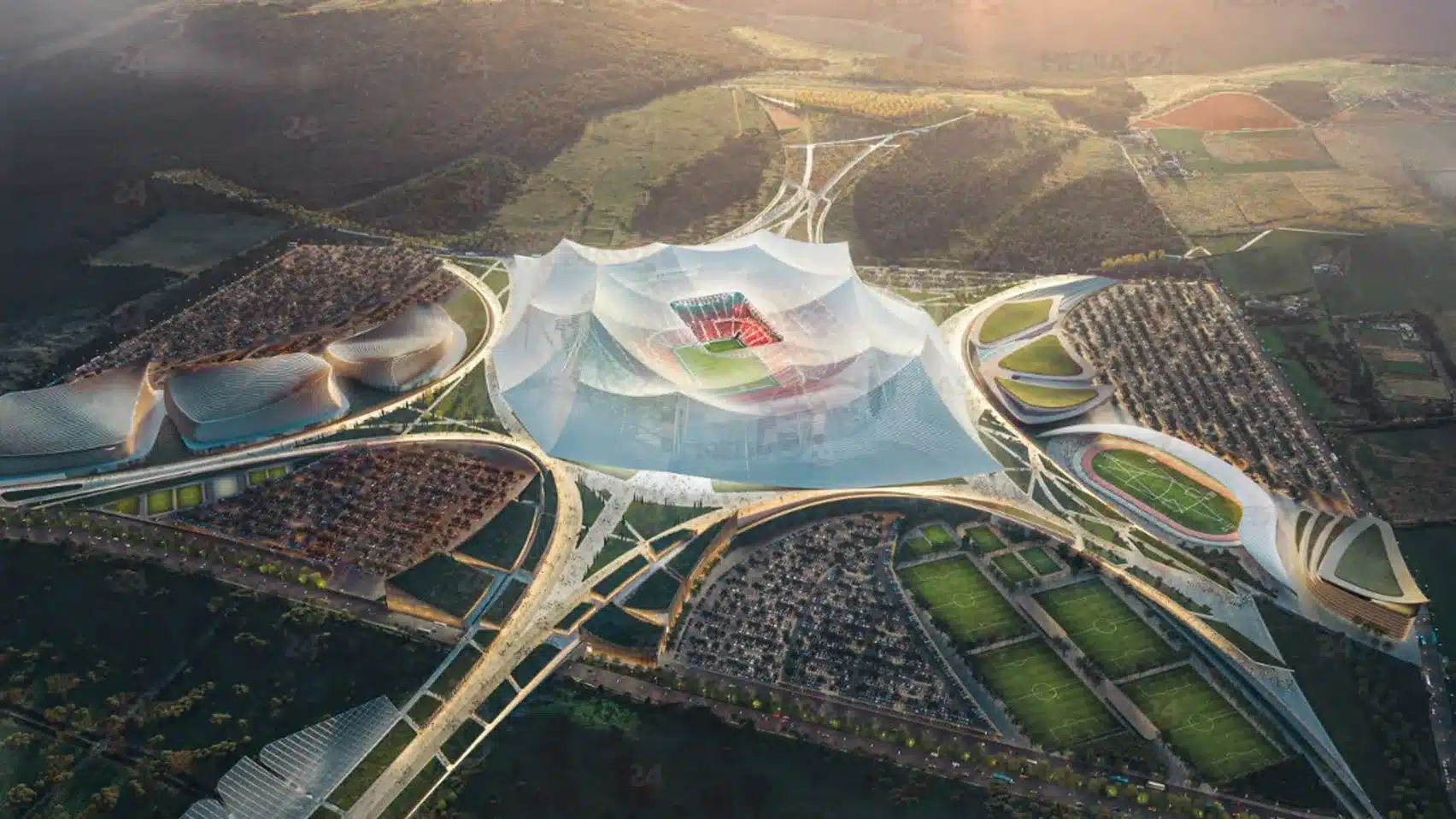First Images Revealed of World’s Largest Football Stadium Planned for Morocco
The first images of the 115,000-seat Grand Stade Hassan II stadium, the world’s largest football stadium, designed by architecture studios Oualalou + Choi and Populous for the 2030 World Cup, have been revealed.
Design and Location
Named after the former king of Morocco, the Grand Stade Hassan II is set to become the world’s largest football stadium, overtaking the Rungrado 1st of May Stadium in North Korea. The stadium is planned for Benslimane, around 40 kilometers from Casablanca. The initial renders were unveiled during a meeting held by the 2030 World Cup organizing committee in Marrakesh.
Competition and Architecture
Earlier this year, Oualalou + Choi and Populous won the competition to design the stadium, which will feature a large tent-like roof inspired by traditional Moroccan Moussem tents. This translucent structure will be supported by numerous angled columns above the seating stands.
Cultural Significance
The design of Grand Stade Hassan II is deeply rooted in Moroccan culture. Oualalou + Choi’s founding partner, Tarik Oualalou, emphasized the cultural and natural integration of the stadium, describing it as a space that embodies Moroccan hospitality and respects the surrounding nature. The design draws inspiration from ancient and primordial figures such as the Moussem, the tent, and the garden, as well as Morocco’s topography and landscapes.
World Cup 2030 and Beyond
The stadium is being designed to host games during the 2030 World Cup, which will take place in Morocco, Spain, Portugal, Uruguay, Paraguay, and Argentina. It is also set to become the home of Morocco’s national football team. In total, five other stadiums in Morocco, three in Portugal, and one each in Uruguay, Paraguay, and Argentina will host World Cup games, alongside 11 stadiums in Spain, including Real Madrid’s recently revamped Santiago Bernabéu.
Architectural Context
Other notable studios shortlisted to design the Grand Stade Hassan II include Swiss practice Herzog and de Meuron and UK practice Zaha Hadid Architects. This selection process highlights the global interest and significance of this project, positioning it as a landmark in international sports architecture.
Conclusion
The Grand Stade Hassan II is set to become a monumental venue in the world of football, reflecting Morocco’s rich cultural heritage while pushing the boundaries of modern stadium design. As it prepares to host the 2030 World Cup, it promises to be a beacon of Moroccan hospitality and architectural innovation.
Finally, find out more on ArchUp:






